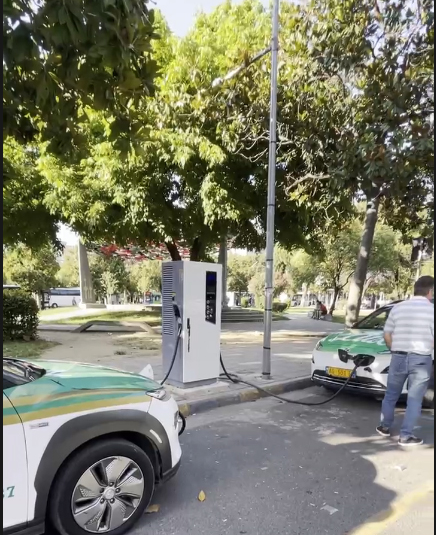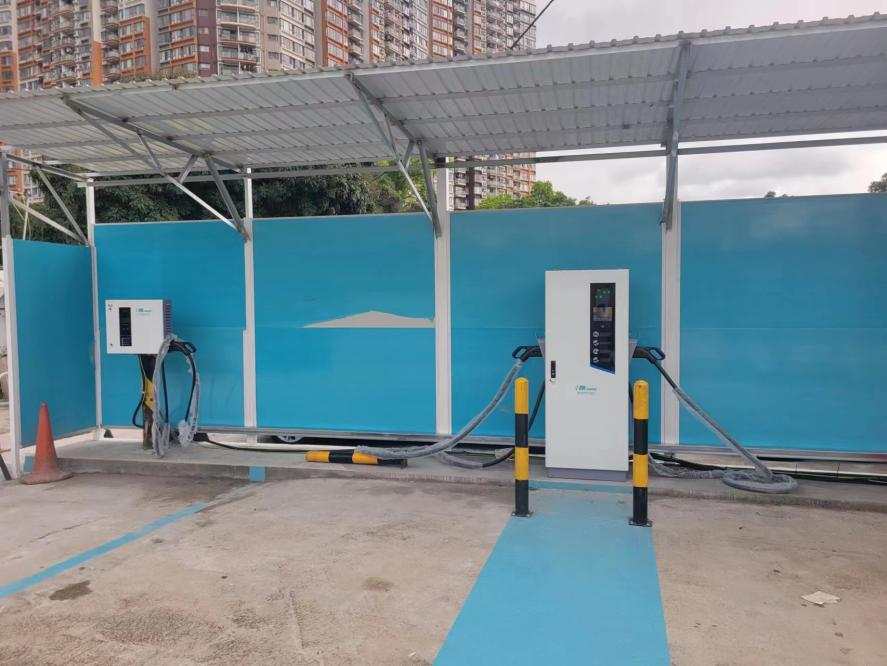
Products
Fast, Reliable, Everywhere

Solutions
Efficient, Innovative EV Charging Solutions.
News
We are committed to the innovation and application of EV charging.
EV charging stations are crucial for electric vehicle (EV) charging infrastructure. Their proper functioning is essential for maintaining charging efficiency and safety. Regular maintenance not only extends the equipment's lifespan but also enhances its performance and reduces the likelihood of issues. This guide provides an overview of best practices for maintaining EV charging stations to ensure they remain in optimal condition.
Regular inspection of EV charging stations and cables is vital for preventing potential failures and safety hazards. Worn or damaged cables can decrease charging efficiency or cause electrical safety issues.

Keeping the charging station and cables clean is important for maintaining good electrical contact and preventing performance degradation caused by dust and dirt.
Stable power connections and well-maintained outlets are essential for the proper operation of EV charging services. Unstable connections can affect the charging station's performance.
Extreme environmental conditions can impact the performance and longevity of charging stations. High temperatures, low temperatures, or high humidity can negatively affect the equipment.
| Environmental Condition | Impact Type | Specific Impact Description |
| High Temperature | Performance Degradation | 1.Heat Dissipation Issues: High temperatures can impair heat dissipation, leading to overheating and decreased performance. 2.Battery Wear: Internal batteries (if present) may suffer from excessive discharge and accelerated aging in high temperatures. 3.Insulation Material Aging: High temperatures accelerate the aging of insulation materials, reducing safety. 4.Electronic Component Failure: High temperatures can cause electronic components to fail or operate erratically. |
| Low Temperature | Performance Degradation | 1.Slower Charging Speed: Low temperatures can slow down the charging speed, impacting efficiency. 2.Battery Efficiency Drop: Batteries react more slowly in low temperatures, affecting the overall efficiency of the charging station. 3.Condensation Issues: Low temperatures may cause condensation inside the equipment, affecting the operation of electronic components. 4.Cable and Connector Issues: Low temperatures can make cables and connectors brittle, potentially causing breakage or poor contact. |
| High Humidity | Performance and Longevity Impact | 1.Corrosion Issues: High humidity can lead to corrosion of internal metal components, affecting the equipment's lifespan. 2.Electrical Short Circuits: Moisture may cause electrical components to short circuit, impacting functionality. 3.Insulation Failure: High humidity can degrade insulation materials, increasing the risk of electrical faults. 4.Mold Growth: Moisture can lead to mold growth, affecting the internal environment and safety of the equipment. |
To ensure reliability in various environmental conditions, select charging equipment with environmental adaptability and perform appropriate maintenance and regular inspections. These measures will help extend the equipment's lifespan and ensure its performance.

A charging station that fails to start may be experiencing power issues, equipment malfunctions, or cable problems.
Slower charging speeds may result from cable issues, dirty connection points, or equipment malfunctions.
Solutions:
Cleaning the connection points of EV charging stations is essential for ensuring proper function and extending equipment lifespan. Follow these steps for effective cleaning:
| Step | Procedure | Considerations |
| 1 | Power Off | Disconnect the charging station from the power source to avoid electric shock and safety issues. |
| 2 | Inspect Connection Points | Look for visible dirt, corrosion, or damage. Severe corrosion may require professional attention. |
| 3 | Use Clean Soft Cloth or Brush | Wipe the connection points with a clean, dry cloth or soft brush to remove surface dust and dirt. Avoid abrasive materials that may scratch the connections. |
| 4 | Use Special Cleaners | For stubborn dirt, use electronic device cleaners (e.g., cleaning sprays). Ensure the cleaner does not directly contact electrical components. |
| 5 | Check After Cleaning | Ensure the connection points are dry and free of cleaner residue. Use a clean cloth to wipe away any moisture. |
| 6 | Reconnect Power | After cleaning, reconnect the power and verify the charging station is functioning correctly with good contact at the connection points. |
Considerations:
Charging stations may generate heat during use, but excessive or unusual heating can indicate equipment issues.
Common Causes of Overheating:
| Usage Condition | Possible Cause | Description |
| High Charging Power | Excessive Power Transfer | High power charging (e.g., Level 2 or DC fast charging) can generate significant heat due to power conversion processes |
| Prolonged Charging | Extended Operation | Continuous charging over long periods can cause internal components to overheat due to sustained operation |
| High Ambient Temperature | Environmental Impact | High external temperatures may hinder the equipment’s ability to dissipate heat, leading to overheating |
| Overloaded Cables and Connectors | Cable Overload | Overloading cables or connectors may produce excess heat, affecting the overall temperature of the charging station |
| Equipment Malfunction or Poor Maintenance | Internal Fault | Faulty internal components or inadequate cooling systems (e.g., fan issues) can lead to overheating |
| Poor Connection | Increased Contact Resistance | Poor connections may increase resistance, generating additional heat |
| External Obstruction | Poor Ventilation | External barriers (e.g., dust, debris) may obstruct heat dissipation, causing overheating |
| Aging or Damaged Parts | Component Aging | Worn or damaged parts (e.g., cables, plugs) can cause heat accumulation |
Solutions:

Maintaining and servicing EV charging stations is crucial for ensuring their performance and safety. By understanding and implementing these maintenance procedures, you can optimize the use of your EV charging station and benefit from reliable battery storage solutions. For any needs or questions, please contact our company, and we will be glad to assist you.
